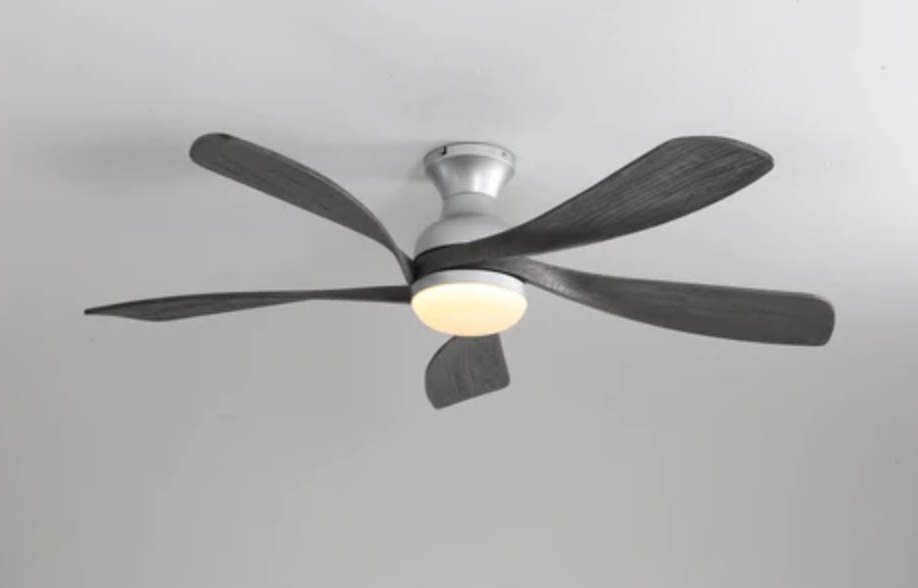
Ceiling fan direction
Ceiling fan direction is an important factor in maintaining comfortable temperatures. During the warm months, your ceiling fan should be rotating in a counter-clockwise direction. This will generate cooler air that rises and pushes hot air down, creating a refreshing breeze. When the weather turns cool, switch your fan to the clockwise direction. This creates an updraft that helps move heated air throughout the room. By changing your ceiling fan direction seasonally, you can save energy and stay comfortable all year long.
If you're having trouble deciding which direction to set your fan, try this simple trick: stand directly beneath the fan, facing up. If it's spinning counter-clockwise, you should feel a cool breeze. This means your fan is in the correct setting for summer. Conversely, if you feel a gust of warm air when facing up and the blades are rotating clockwise, then it's time to switch directions for winter.
Once the proper direction has been selected, adjust the speed setting on your fan accordingly. You can choose from multiple settings, from low to high. During the hot summer months in particular, low speed settings are ideal for creating a gentle breeze that cools the room without being overly intrusive. When it’s cold outside, you can increase the speed setting to create an updraft and circulate warm air more quickly throughout your living space.
By adjusting your ceiling fan direction seasonally and adjusting the speed setting depending on your needs, you can enjoy an energy-efficient cooling or heating system. Plus, with a few simple steps, you can make sure that your home stays comfortable all year long!
Testimonials from satisfied customers are a great way to gauge how well your 3 blade ceiling fan are working. If you're considering upgrading or replacing your modern ceiling fan with light, reviews can give valuable insights into which products offer the right combination of quality, performance, and value for money. When selecting a new chandelier ceiling fan, take into account the noise level (louder models tend to be less energy-efficient), as well as any additional features like light fixtures or remotes.
Taking the time to research bladeless ceiling fan with light and set the direction seasonally can help you save energy and money while keeping your home comfortable all year long. With a little guidance, you'll be able to find a fan that's perfect for your needs—without sacrificing style in the process.
Where is the best location for a ceiling fan in a room?
Ceiling fans should be installed, or mounted, in the middle of the room and at least 7 feet above the floor and 18 inches from the walls. If ceiling height allows, install the fan 8 - 9 feet above the floor for optimal airflow.
Does pointing a fan up cool the room?
The U.S. Department of Energy notes that fans don't actually reduce the temperature inside the room. Instead, fans help moisture evaporate from skin. Evaporation transfers heat from your body to the ambient air, making you feel much cooler and reducing the need for air conditioning in some cases.
Finally, remember to regularly clean and lubricate your ceiling fan's blades and motor. This will help keep the fan running smoothly and efficiently for years to come, saving you money on energy bills and ensuring that you get the most out of your investment. With just a few simple steps, you can enjoy improved efficiency.


